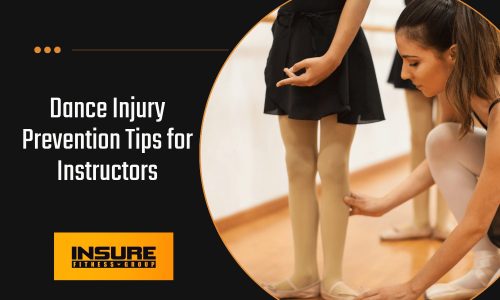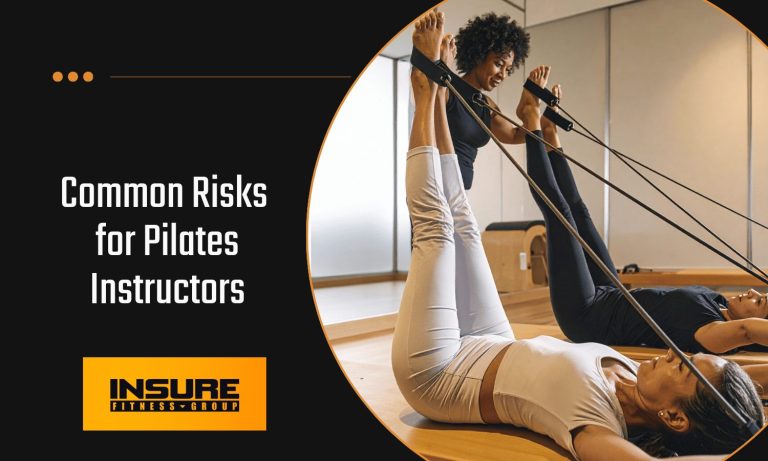You’re Not Just a Dance Teacher, You’re a Safety Leader
You may have had this situation before: you’re halfway through your beginner contemporary dance class, and one of your students suddenly grabs their ankle mid-turn and crumples to the floor. The music stops and the energy shifts. You wonder, could this have been prevented?
If you’re just starting your career as a dance instructor, the spotlight doesn’t just shine on your choreography. It’s also on your ability to prevent injuries and promote a healthy dance career for your students. Whether you teach ballet, hip hop, or contemporary dance, understanding dance injury prevention tips for instructors is important.
Let’s explore how to keep dancers safe, studios energized, and your own career injury-free, without dulling the magic of movement.
1. Warm-Ups Aren’t Optional—They’re Essential
Before you even cue the music, start with a proper warm-up. Dynamic stretches increase blood flow, raise body temperature, and prep joints and muscles for the intense physical demands of dance.
- Try This: Begin class with arm swings, gentle hip circles, and ankle rolls. Then, graduate to high knees or grapevines. These dynamic stretches prime the body to move safely, reducing the risk of sudden injury.
Studies show that warm-ups can help reduce muscle imbalances and prevent dance injuries by improving coordination and reaction time.
2. Your Floor, Your Responsibility
The best dance class in the world means little if the floor beneath your students is slick, warped, or covered in debris.
- Regularly inspect the studio.
- Keep floors clean and dry.
- Opt for sprung or marley flooring to reduce impact-related injuries.
Why it matters: Overuse injuries and stress fractures thrive in spaces that don’t absorb shock. The right surface plays a huge role in dance injury prevention, especially in high-impact styles like tap or jazz.
3. Dance Shoes Are Not a Fashion Statement
Wearing proper shoes is non-negotiable. Whether it’s pointe shoes, split soles, or barefoot for contemporary dancers, make sure your students are wearing the right footwear for their dance routine and that the shoes are in good condition.
Improper footwear = increased risk for:
- Ankle sprains
- Foot and ankle injuries
- Trigger toe
- Snapping hip syndrome
For additional support, check out this guide on ballet teacher injury prevention.
4. Build Strength, Not Just Style
It’s not enough to master the art of contemporary dance or dancing en pointe. To prevent injuries, students need strength training to support their dance technique.
Incorporate exercises that focus on:
- Core stability – necessary for balance
- Hip and glute strength – protects against hip injuries and hip syndrome
- Calf and ankle exercises – reduces the risk of ankle injuries
Cross-training methods like yoga, Pilates, or swimming will boost flexibility and support sports performance.
According to the Journal of Dance Medicine & Science, dancers who cross-train experience fewer injuries and demonstrate improved peak performance.
5. Monitor Fatigue and Encourage Rest
Many young dancers and even professional ballet dancers push through fatigue, viewing rest as weakness. But fatigue drastically increases the risk of injury, especially in the lower extremities.
Warning signs of overtraining include:
- Persistent muscle soreness
- Mood swings or irritability
- Decreased sports performance
Make sure to schedule rest days and advocate for proper rest between rehearsals. Recovery strategies like static stretching, foam rolling, and even sleep hygiene play a role in minimizing dance related injuries.
Need help reinforcing healthy boundaries? Use a solid waiver and policy structure like this: dance instructor waiver tips
6. Identify and Address Common Dance Injuries
Even with the best prevention tips, injuries happen. Knowing how to identify common dance injuries quickly reduces long-term damage.
Most Common Dance Injuries:
- Ankle sprains: #1 traumatic injury in dancers
- Shin splints: pain in the front or inside of the legs
- Hip injuries: especially in dancers who hyperextend
- Stress fractures: often caused by overuse or improper alignment
- Shoulder injuries: in dancers doing frequent lifts or floor work
If someone experiences pain or a sudden injury, apply RICE (Rest, Ice, Compression, Elevation) and refer them to a physical therapist or sports medicine specialist for a personalized treatment plan.
7. Fuel the Body—Fuel the Career
Dancers often struggle with body image, leading them to overlook nutrition. But a well-balanced diet fuels stamina, supports physical activity, and strengthens muscles and bones, helping to prevent dance injuries.
Encourage:
- Balanced meals with protein, carbs, and healthy fats
- Hydration throughout class
- Eating before and after training for recovery
Nutrition education is key to creating a healthy dance career. Support your dancers with knowledge and empathy and all round better health.
8. Promote Communication and Emotional Safety
A dancer hiding pain is a dancer at risk. Create a classroom culture where students feel comfortable telling you when something doesn’t feel right.
Say things like:
- “If anything feels off today, let me know. We’ll modify or take a break.” This proactive approach helps you catch overuse injuries, address muscle imbalances, and adjust your dance technique instruction in real-time.
When students feel heard, they dance safer and better.
9. Invest in the Right Insurance and Support
Even with the best intentions and safest classes, injuries dancers experience can still occur and that includes you.
Dance instructors are exposed to different injuries, liabilities, and legal risks, especially if you’re teaching freelance, at events, or in multiple studios.
Protect your career, your classes, and your peace of mind with:
Need more info? Explore what instructors earn and how to build your dance career on this helpful salary guide.
Protect the Art, Protect the Artist
Your role as a dance teacher is powerful, you’re shaping bodies, minds, and futures. But your first responsibility is safety. The best dancers are not just talented, they’re healthy, supported, and smart about their movement.
From choosing the right shoes to encouraging open communication and assuring proper recovery, you have the tools to protect your students and yourself.
When you combine injury prevention, smart training, and professional coverage, you’re not just teaching dance. You’re building longevity in an industry where passion and physicality collide.
Insure your passion. Protect your movement. Get covered today.
FAQS
What kind of dance training helps avoid injury in young dancers?
Dance training that focuses on proper technique, strength building, and flexibility is important for avoiding injury. Programs that integrate dynamic warm-ups, cross-training (like Pilates or swimming), and technique classes help reduce strain from repetitive movements and improve overall alignment and body awareness.
When should injured dancers start physical therapy after an injury?
Injured dancers should ideally begin physical therapy within 48–72 hours after a diagnosis, especially for soft-tissue injuries like sprains or strains. Early intervention speeds up recovery and helps prevent compensatory movement patterns that can lead to further such injuries. Always consult a licensed therapist to create a customized recovery plan.
How do repetitive movements in dance lead to injury?
Repetitive movements like turns, jumps, or extensions, when done without enough rest or proper technique, lead to overuse injuries such as stress fractures, tendonitis, or shin splints. To prevent this, instructors should vary movement patterns during class and ensure that students have adequate recovery time between rehearsals.
What role does proper nutrition play in preventing dance injuries?
Proper nutrition fuels muscle recovery, supports bone health, and maintains energy levels. Without it, dancers are more susceptible to fatigue, which increases the risk of most injuries. A well-balanced diet with carbs, protein, healthy fats, and hydration supports both performance and injury prevention.
Are there programs that help dancers stay injury-free?
Yes, there are programs designed for injury prevention in dancers. These include neuromuscular training, cross-training, and conditioning classes tailored for dancers. Many ballet schools and conservatories now include strength training and functional mobility classes to address the physical demands of dance.
How does a strong core help prevent injuries in dancers?
A strong core stabilizes the spine and pelvis, improving balance, alignment, and control. It helps dancers maintain posture during complex movements, reducing strain on joints and muscles. Core strength is especially important for controlling turns, jumps, and extensions, a lack of it contributes to such injuries as back pain and hip instability.
What is the best way for dance instructors to teach proper technique in beginner classes?
Instructors should break down movements slowly, use clear demonstrations, and offer hands-on corrections when appropriate. Consistency in teaching proper technique, especially during technique classes, prevents many dancers from developing bad habits that lead to injury. Prioritize body alignment and controlled movement over speed or complexity.
Why do most injuries in dance happen during performances or rehearsals?
Most injuries occur due to fatigue, improper warm-ups, and pushing through pain during high-pressure situations like performances. Long hours of dance training without rest or variation also contribute. Prevention includes good scheduling, structured rest, and reinforcing safe movement patterns.





